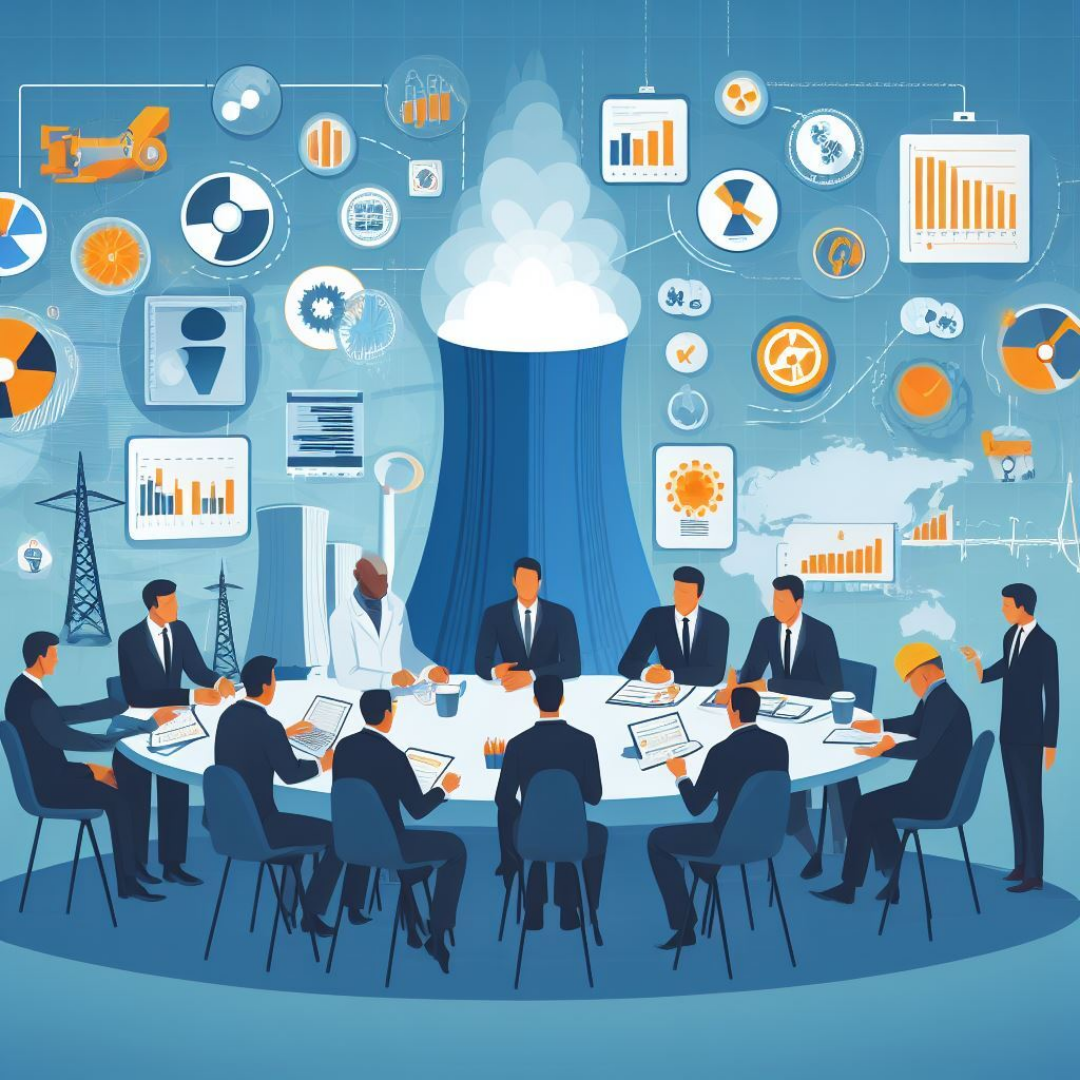The weeklong conference featured ten high-level panels, a high-level segment, a special session, 18 technical sessions, and seven side events organized by various stakeholders.

The IAEA’s 2nd International Conference on Climate Change and the Role of Nuclear Power 2023: Atoms4NetZero, concluded in Vienna with an appeal for a “level playing field” on energy policies and access to financing so that nuclear power can fulfil its potential in achieving climate change and energy security goals.
The conference, presided over by Ambassador Hamad Alkaabi of the United Arab Emirates (UAE), marked a week of high-level discussions involving nearly 550 participants from 81 countries and 26 invited organizations. The consensus emerged that nuclear energy holds a pivotal role in addressing climate change but must surmount challenges to realize large-scale deployment, as indicated by authoritative global studies urging net zero emissions by 2050.
“We must continue to push for a level playing field for nuclear energy, in terms of policies and access to financing, which can allow the technology to benefit from similarly favorable conditions that helped to deploy renewable energy technologies at scale over the last decade,” Mr Alkaabi said in his summary of the conference’s conclusions.
“Long term energy policies, innovative electricity market designs and technology-neutral sustainable finance frameworks that recognize nuclear’s contribution to energy system reliability, flexibility and decarbonization are needed.”
At the conference’s outset, the IAEA released its latest annual outlook for nuclear power in the coming decades, with projections revised upward for the third consecutive year. The high-case projection envisions installed nuclear capacity more than doubling by 2050.
This aligns closely with figures recently published by the International Energy Agency (IEA) for nuclear power’s necessary contribution to meet the Paris Agreement’s goal of limiting the average temperature increase to 1.5°C above pre-industrial levels.
Presently, 31 countries operate nuclear power, supplying over nine percent of global electricity and accounting for about 25 percent of its clean electricity. Approximately 30 other countries are initiating or contemplating the adoption of nuclear power, with support from the IAEA.
“We found consensus on the crucial role of nuclear energy in meeting climate targets, with emphasis on safe long-term operation of existing nuclear power plants in established nuclear markets, the need to rapidly deploy proven large-scale reactors and the urgency of bringing Small Modular Reactors (SMRs) to market as soon as possible, particularly to replace fossil plants of similar size, including to meet the needs of emerging countries and for non-electric applications,” Mr Alkaabi said.
The UAE will host COP28, the UN’s main climate change conference, beginning next month in Dubai, where the IAEA for the second successive year will host a pavilion spotlighting the role of nuclear energy in mitigating and adapting to climate change.
“This year at COP, countries using nuclear energy will gather around the global convening point of the IAEA to state the reality: they use, they will continue to use, and they will increase the contribution of nuclear energy to the energy mix,” IAEA Director General said in his opening remarks to this week’s conference.
The International Conference on Climate Change and the Role of Nuclear Power commenced with a keynote address by Fatih Birol, the Executive Director of the International Energy Agency, who noted that progress on nuclear power is currently not keeping pace and pointed to Europe, where 20 years ago nuclear provided 30% of electricity but will fall to about 15% in the coming years unless national policies change. “This has a lot of implications,” Mr Birol said, “for Europe’s electricity security and how challenging it will be to fight against climate change.”
In addition to providing clean electricity 24 hours a day, nuclear power could revolutionize emissions reduction in industry, transportation, and buildings—commonly referred to as the hard-to-abate sectors—responsible for 60% of global greenhouse gas emissions.
Nuclear power holds the potential to produce process heat for industries like cement and steel making, clean hydrogen for transport and other uses, district heating for buildings, and also aid in addressing the increasing global demand for fresh drinking water by reducing the carbon footprint of desalinization.
“Nuclear power is the only technology that can produce at scale the three low-carbon energy vectors needed to reach net zero: electricity, heat and hydrogen,” Mr Alkaabi said. “Unfortunately, there is a large disconnect between what nuclear technology can deliver and how this potential is portrayed in climate scenarios that inform policymakers.”
To assist governments and financial institutions in making data-driven, science-based decisions regarding their investments in future energy systems, the IAEA launched the Atoms4NetZero initiative last year.
In collaboration with various partners, it aims to offer a comprehensive energy scenario modeling service, showcasing the full potential of nuclear power in achieving net zero emissions, including providing non-electric applications such as hydrogen production.
The weeklong conference featured ten high-level panels, a high-level segment, a special session, 18 technical sessions, and seven side events organized by various stakeholders.
The panels centered on the role of nuclear power in the global clean energy transition, and how to enable it to fulfil its potential in that role, and mobilize multi-stakeholders, including women and young generation groups, to facilitate the global dialogue about nuclear as a sustainable low-carbon energy source.